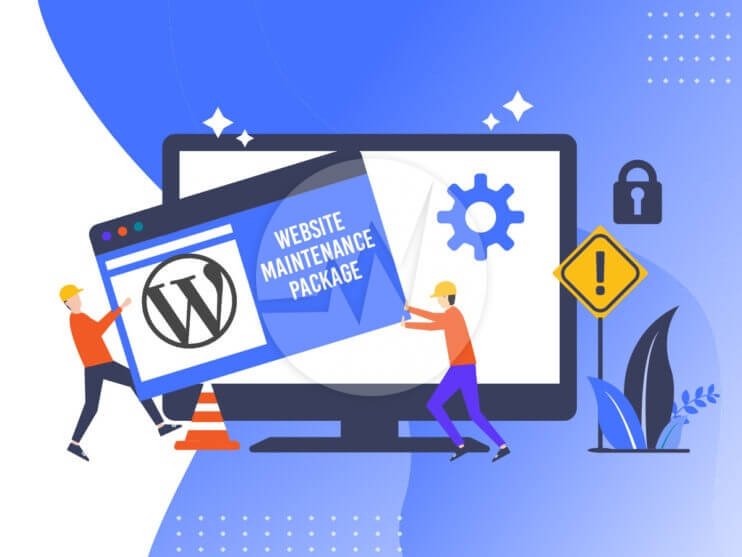To boost your web design performance, you can implement several key strategies. Optimize your images by compressing files and specifying dimensions in HTML, and use lazy loading for offscreen images. Streamline static file delivery with a Content Delivery Network (CDN) and browser caching, which can reduce load times by up to 80% for returning visitors. Minimizing unnecessary JavaScript code and enhancing server response times also make a significant impact. By reducing HTTP requests and redirects, and leveraging browser caching and CDNs, you’ll see notable improvements. As you explore these techniques further, you’ll uncover even more ways to supercharge your site’s performance.
Optimize Images for Faster Loading
By optimizing your images, you can reduce the file sizes of your web pages, with some compression tools shrinking them by up to 80% without sacrificing quality. You can start by compressing images using tools like TinyPNG or JPEGmini.
Next, specify image dimensions in your HTML to prevent layout shifts and improve loading speed. This allows browsers to allocate space for the images, making your page load more smoothly.
To take it to the next level, use lazy loading to defer offscreen images, reducing initial page load time and improving user experience. Don’t forget to optimize images for mobile responsiveness by choosing the right formats, like WebP, for faster loading on mobile devices.
Minimizing image requests is also key – try combining multiple images into sprites to reduce server requests and enhance loading speed. By implementing these image optimization techniques, you can significantly enhance your website’s loading speed, making it more enjoyable for users and giving you a competitive edge.
Streamline Static File Delivery

Now that you’ve optimized your images for faster loading, it’s time to focus on streamlining the delivery of your static files, such as CSS and JavaScript, to further reduce page load times and enhance website performance.
To achieve this, utilize a Content Delivery Network (CDN) to distribute your static files across multiple servers worldwide. By serving files from the nearest server to your users, CDNs significantly reduce latency, improving website performance. This simple step can greatly reduce server load and decrease page load times, resulting in a better user experience.
To take it a step further, implement browser caching for your static files. This way, returning visitors will experience even faster loading of your web pages. Don’t forget to properly configure cache lifetimes and headers for your static resources, as this will enhance the overall performance of your website.
By leveraging CDNs and browser caching, you’ll be able to deliver your static files more efficiently, leading to a faster, more responsive website that will keep your users engaged and happy.
Minimize Unnecessary JavaScript Code

Your website’s performance can take a hit if it’s bogged down by unnecessary JavaScript code, which can increase load times and slow down page rendering.
Think about it – every line of code requires execution, and when you’ve got redundant or unused JavaScript libraries, it adds up. By removing unused JavaScript and minimizing what’s left, you can reduce the amount of code that needs to be executed, and that’s a performance boost waiting to happen.
Don’t underestimate the impact of unnecessary JavaScript on your website’s performance. It’s not just about load times – it’s also about bandwidth usage and rendering times. When you’re serving up unnecessary code, you’re basically wasting resources and slowing down your site. And that’s a surefire way to impact user experience.
Regularly review and optimize your JavaScript code to ensure efficient website performance and faster loading times. By doing so, you can make a tangible difference in how quickly your pages load and respond.
Don’t let unused JavaScript weigh you down – take control and optimize your code for improved website performance.
Enhance Server Response Times

As you work to boost your web design performance, it’s essential that you enhance your server response times – after all, you want your site to load quickly for your users.
To achieve this, you’ll want to focus on optimizing your server configuration, ensuring it’s running efficiently and handling requests effectively. By doing so and leveraging caching mechanisms, you can markedly reduce the time it takes for your server to respond to requests, resulting in a better user experience and lower bounce rates.
Optimize Server Configuration
To enhance server response times, you’ll need to optimize your server setup, which involves fine-tuning settings to handle incoming requests more efficiently. This is important for improving website performance, as faster server responses directly impact page load speeds and user experience. As a website owner, you’ll want to make sure your site meets the Core Web Vitals standards, which emphasize the importance of rapid server response times.
Here are some key considerations for optimizing your server setup:
| Server Configuration | Impact on Performance |
|---|---|
| Efficient server-side scripts | Reduces server processing time |
| Optimized database queries | Decreases query execution time |
| Properly configured caching | Minimizes repeat requests |
| Sufficient server resources | Ensures handling of concurrent requests |
| Regular performance monitoring | Identifies bottlenecks and areas for improvement |
Leverage Caching Mechanisms
By implementing effective caching mechanisms, you can speed up server response times and enhance overall website performance. You’re storing frequently accessed data in a convenient location, reducing the time it takes for your server to respond to user requests.
To take it to the next level, try implementing page caching and fragment caching. These strategies can greatly improve server response times, leading to faster load times and better user experiences.
You can also leverage browser caching to instruct browsers to store static resources locally, reducing server requests and improving load times. And, don’t forget about CDNs – by utilizing them for caching, you can distribute cached content globally, ensuring quick access for users across different regions.
Properly configured caching mechanisms can lead to faster loading speeds, and users will thank you for it. By implementing these caching strategies, you can take a substantial step towards boosting your web design performance and giving users the seamless experience they crave.
With caching mechanisms in place, you can enhance server response times and elevate user experiences – a win-win for everyone involved.
Reduce HTTP Requests and Redirects

As you work to boost your web design performance, reducing HTTP requests and redirects is an important step you can’t afford to overlook.
When you minimize HTTP requests, you’ll cut down on the time it takes for your website to load.
By optimizing your redirects strategy, you’ll avoid the extra delays that can frustrate your users.
Minimizing HTTP Requests
Reducing HTTP requests is an essential step in optimizing your website’s performance, and it can have a significant impact on page speed. Each HTTP request adds to the load time, so minimizing them can lead to a 20-30% improvement in page speed.
You can achieve this by combining CSS and JavaScript files, reducing the number of images, and using CSS sprites to combine images into a single file.
By doing so, you’ll not only improve page speed but also enhance user experience. A faster website means users can quickly access the information they need, leading to higher engagement and satisfaction.
To get started, review your website’s HTTP requests and identify areas for improvement. Use tools to analyze your website’s performance and pinpoint which requests are slowing it down. Then, apply the necessary optimizations to minimize HTTP requests and improve overall performance.
Optimizing Redirects Strategy
To further enhance your website’s performance, you need to optimize your redirects approach, as excessive redirects can slow down page loading and negatively impact user experience. When a user clicks on a link, you want them to get to their destination quickly, without any unnecessary detours. That’s why limiting unnecessary redirects is vital – it reduces the number of HTTP requests, which in turn improves overall website speed.
Each redirect adds extra time to the loading process, and those seconds can accumulate, affecting user experience adversely. A proper redirect strategy is essential to prevent unnecessary delays in page loading. By streamlining your redirects, you can improve loading times and create a smoother user journey.
Excessive redirects can lead to a poor user experience and even affect your search engine optimization efforts. By optimizing redirects, you can significantly enhance website performance, accelerating the web experience for your users. So, review your redirect strategy today and give your users the fast, seamless experience they desire.
Leverage Browser Caching and CDNs

By leveraging browser caching and content delivery networks (CDNs), you can greatly enhance your website’s performance and speed. Browser caching stores frequently accessed resources locally, reducing load times and server requests. CDNs deliver content from servers closest to users, decreasing latency and improving site speed.
| Technology | Benefits | Performance Impact |
|---|---|---|
| Browser Caching | Reduces load times and server requests | Up to 80% reduction in loading time for returning visitors |
| CDNs | Decreases latency and improves site speed | Enhances website performance for geographically diverse users |
| Combining Both | Substantially boosts website speed and user experience |
To Recap
You’ve implemented the top tips for boosting web design performance – now what? Can you afford to have a slow-loading website in today’s fast-paced digital landscape?
By optimizing images, streamlining file delivery, minimizing unnecessary code, and leveraging browser caching, you’ve taken significant strides in enhancing user experience. Your website’s improved performance will pay off, driving engagement, conversions, and ultimately, revenue.
Keep pushing the boundaries of web design performance to stay ahead of the curve.










